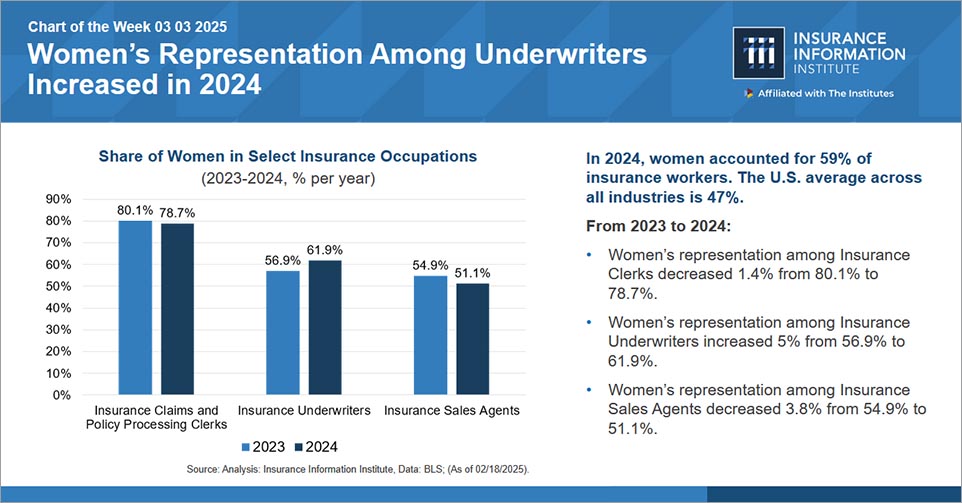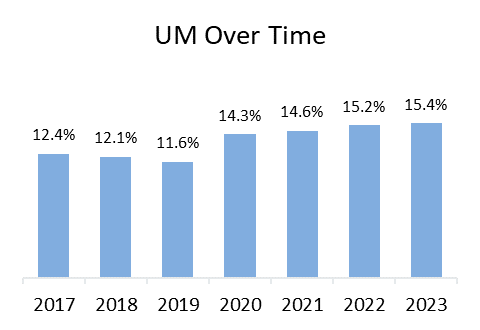[ad_1]

When the U.S. Treasury Department’s Federal Insurance Office (FIO) announced in December 2022 that it was considering a new data-reporting mandate for certain property/casualty insurers, it raised red flags for insurers and policyholders.
In response to a request for comments on the proposed data call, Triple-I told FIO the requested data would be duplicative, could lead to misleading conclusions, and – by increasing insurers’ operational costs – would ultimately lead to higher premium rates for policyholders.
“Fulfilling this new mandate would require insurers to pull existing staff from the work they already are doing or hire staff to do the new work, increasing their operational costs,” Triple-I wrote. “As FIO well knows, state-by-state regulation prevents insurers from ‘tweaking’ their cash flows in response to change the way more lightly regulated industries can. Higher costs inevitably drive increases in policyholder premium rates.”
In its own response, the National Association of Insurance Commissioners (NAIC) emphasized the importance of collaboration with the industry to avoid such unintended consequences.
“While we recognize the Treasury’s desire to better understand the impact of climate risk and weather-related exposures on the availability and affordability of the homeowners’ insurance market,” NAIC wrote, “we are disappointed and concerned that Treasury chose not to engage insurance regulators in a credible exercise to identify data elements gathered by either the industry or the regulatory community.”
FIO has listened and responded appropriately. The agency has abandoned its plan to gather data on home insurance rates and availability in high-risk states. Instead, NAIC announced that it has implemented a nationwide Property & Casualty Market Intelligence Data Call (PCMI) in collaboration with FIO.
“The PCMI data call represents the collaborative, nonpartisan work that state insurance regulators have undertaken through the NAIC to address the critical challenge of the affordability and availability of homeowners’ insurance and the financial health of insurance companies,” said NAIC president Andrew Mais, who also serves as Connecticut’s insurance commissioner.
The change in approach is important both on its own merits – in ensuring that FIO obtains the information it needs without excessively and unnecessarily burdening the insurance industry – and in the recognition it reflects that federal actions affecting the insurance industry should involve the industry. For example, legislation proposed by U.S. Rep. Adam Schiff earlier this year to create a federal “catastrophe reinsurance program” raises several concerns that warrant scrutiny and discussion – not the least of which is that it would set coverage thresholds and dictate rating factors based on input from a board in which the insurance industry is only nominally represented.
“Triple-I commends the decision by FIO and NAIC to collaborate on a joint comprehensive property/casualty insurance data call to gather insights into the dramatic changes we’re seeing in the insurance marketplace,” said Triple-I CEO Sean Kevelighan. “Insurance companies are committed to finding solutions for how we can predict and prevent property damage from natural disasters, as well as keeping costs of coverage at competitive levels. Data calls are time-consuming and expensive. A unified collection of data will help make this a more efficient process.”
Learn More:
Federal “Reinsurance” Proposal Raises Red Flags
FEMA Reauthorization Session Highlights Importance of Risk Transfer and Reduction
NAIC Seeks Granular Data From Insurers to Help Fill Local Protection Gaps
Data Call Would Hinder Climate-Risk Efforts More Than It Would Help
It’s Not an “Insurance Crisis” – It’s a Risk Crisis
Complex Risks in a Complicated World: Are Federal Backstops the Answer?
Triple-I Responds to SEC’s Proposed Climate-Risk Disclosure Requirements
Triple-I CEO: Insurance Leading on Climate Risk
[ad_2]
Source link










